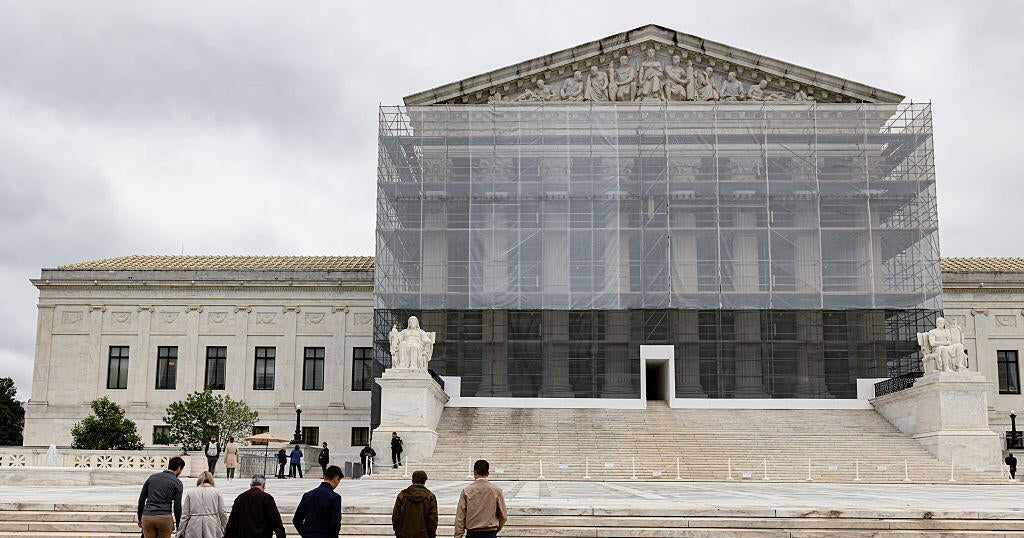The Supreme Court has recently intervened in a contentious legal battle regarding federal workforce management, effectively lifting a lower court’s injunction that halted significant layoffs across numerous federal agencies. Following a request from the Trump administration, the Court’s decision facilitates efforts to reorganize and reduce the size of the federal government. This ruling opens the door for potential job cuts and department restructuring despite underlying controversies surrounding executive authority and legal interpretations of government efficiency measures.
| Article Subheadings |
|---|
| 1) Overview of the Supreme Court’s Ruling |
| 2) Background on Federal Layoff Plans |
| 3) Legal Arguments Presented to the Court |
| 4) Reactions to the Supreme Court’s Decision |
| 5) Implications for Federal Workers |
Overview of the Supreme Court’s Ruling
The Supreme Court’s decision to lift the injunction addresses the legal constraints that were temporarily preventing job cuts within federal agencies. The Court’s unsigned opinion indicates confidence in the Trump administration’s legal standing regarding executive action. By ruling this way, the Supreme Court allows the government to move forward with organized layoffs despite the financial uncertainties and legal challenges that accompany such radical changes within federal structures.
Background on Federal Layoff Plans
In response to claims of inefficiency and redundancy, the Trump administration has aimed to significantly downsize the federal workforce through initiatives led by the Department of Government Efficiency (DOGE). Plans for layoffs and restructuring have been in the works for several months, drawing criticism from various corners, including employee labor unions and advocacy groups concerned about the ramifications of such reductions on critical public services. A federal judge initially blocked these plans, claiming the executive orders linked to them were unlawful, thereby igniting a more extensive legal battle.
Legal Arguments Presented to the Court
In seeking a review, the Justice Department argued that the district court’s injunction was premature and unfounded, contending that the administration had the authority to implement such workforce changes under existing federal statutes. Lawyers representing the government asserted that the Executive Order and subsequent memoranda issued by the Office of Management and Budget and the Office of Personnel Management were within the bounds of executive power. The Supreme Court’s decision reflects a larger ongoing debate surrounding the extent of presidential authority in budgetary and administrative matters.
Reactions to the Supreme Court’s Decision
The ruling has sparked varied reactions, particularly among congressional leaders and labor advocacy groups. Proponents of the administration’s approach argue that the cuts are necessary for streamlining operations and curbing wasteful spending. They perceive it as a long-overdue modernization of government practices. Conversely, dissenting voices, including Justice Ketanji Brown Jackson‘s noted dissent, express deep concerns regarding the broader implications for government efficiency and employee morale. Critics argue that job cuts could exacerbate existing issues related to service delivery and public well-being.
Implications for Federal Workers
With the Supreme Court’s clearance, the path for potential layoffs has been paved, causing anxiety among federal employees who fear job insecurity and loss of benefits. The implications extend beyond individual employment, affecting overall departmental efficiency and the delivery of essential services to the public. Moreover, ongoing negotiations between labor unions and federal management will likely intensify as the administration prepares to implement its workforce transformation strategies. The outcome of these negotiations could have lasting effects on federal labor relations and the overall stability of government functions.
| No. | Key Points |
|---|---|
| 1 | The Supreme Court lifted an injunction halting federal layoffs. |
| 2 | The Trump administration aims to reorganize federal workforce efficiency. |
| 3 | The Justice Department argued that executive orders are lawful. |
| 4 | Reactions to the ruling vary significantly among policymakers and unions. |
| 5 | Future ramifications for federal workers and service delivery are anticipated. |
Summary
The Supreme Court’s recent ruling signifies a pivotal moment in the ongoing battle over federal workforce management and executive authority. By permitting the Trump administration’s layoff plans to move forward, the decision not only changes the landscape for government operations but also shapes public discourse on efficiency, legality, and service delivery. The ramifications for federal employees could be far-reaching, affecting morale and public service accessibility amid an era of significant organizational change.
Frequently Asked Questions
Question: What prompted the Supreme Court’s involvement in federal layoffs?
The Supreme Court was requested to lift an injunction that had blocked the Trump administration’s plans to implement layoffs across federal agencies. This legal intervention followed concerns about executive authority and efficiency.
Question: What was the basis of the federal judge’s injunction against the layoffs?
The federal judge believed that the executive orders associated with the layoffs were unlawful, thus prompting the injunction that halted any job cuts until the legal issues could be resolved.
Question: How are federal workers reacting to the Supreme Court’s decision?
The ruling has caused anxiety among federal employees, who fear job insecurity and potential loss of benefits, prompting discussions about employee morale and service delivery impacts.


